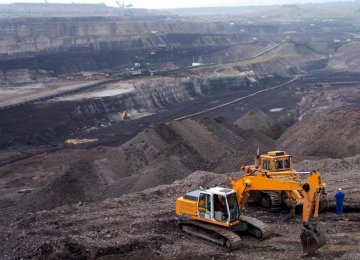The European growth story–is it reliable? And is it back for good? Those questions and more as well as a closer analysis of growth are put to the European Commissioner for Economic Affairs–Pierre Moscovici.
One growth indicator is our employment and that’s steadily improving–9.5% in Europe and 11% in the eurozone. In most countries–the unemployment rate is falling with the biggest drops witnessed in Slovakia, Spain & Ireland. It has only risen in four countries. And that’s just one indicator, Euronews reported.
The signs of growth are finally here. But just like in the first laps of a race–caution, strategy and sometimes difficulties can put competitors at different speeds.
GDP, the speed gauge for these countries is up in both the Eurozone area and the EU compared to last year except in France where it is stable. Racing into the highest growth category are Latvia, Malta, the Czech Republic and Spain.
The other indicators that get our race cars running are showing strong performances too. Household consumption is rising. What is exported is rising and what is imported is also growing. So, maybe the race still has many laps to go–but it is off to a slow but steady start!
Another indicator is, how Europe's industry is doing. The industrial production index identifies turning points in economic development quite early by reflecting how much value is being added in different industries. This index is now showing signs of life–some strong while others are slowly improving.
Euronews’ Monica Pinna travelled to Poland where both were highlighted.
Industry is the backbone of Europe’s economy. It produces 80% of Europe’s exports, and those exports are driving its recovery. In Poland for example–one of Europe’s emerging economies–GDP is growing at rates above 3% and industrial production growth is expected to be 5.5% in 2015. To understand what’s driving this, Real Economy decided to get the perspective of one of Poland’s leading companies, the main national supplier of city buses and a key exporter in Europe.
“Our sales in the last number of years have not witnessed a big drop. It was possible due to our presence in many countries in many markets in Europe, and not only in Europe. In the markets where there was a drop, we were looking for the customers looking for a special product (a niche product),” explained Solaris CEO, Dariusz Michalak.
Companies like Solaris are key to the European economy, as the automotive industry provides jobs for 12 million people in Europe and accounts for 4% of the EU’s GDP.
“The evolution of industrial production indicates that Europe has started growing again, but also that this growth is happening at different speeds in different countries,” explained Pinna.
Some countries like France, the Netherlands, and Estonia show negative industrial production, while EU emerging markets in particular, like Poland and the Czech Republic, are growing.
Tadeusz Kowalski, Professor at the Poznan University of Economics and Business, said: “Countries like Hungary, the Czech Republic and Poland are still much less developed than the core European countries. The pace of catching up is pretty fast, but we have to be realistic. I think we need at least two decades to reach the productivity levels of the average GDP per head for the developed areas of Europe.”
About half the sectors in the eurozone are still in recession. In Central Europe all sectors are expanding, although the stages differ from sector to sector.
The European Commissioner for Economic and Financial Affairs, Pierre Moscovici said: “Europe is now in a clear sound robust recovery. The problem is that this recovery is at first, sluggish and second, unequal. It is unequal between the eurozone and non-eurozone member states.
“The eurozone had to adapt more during the crisis because the rules are tighter. When you look at the growth forecast that was last delivered a few months ago, we are going to deliver the next ones at the beginning of November–the gap is only 0.2% or 0.3%–and it was double in the last number of years.
“I am confident that the quantitative easing program will last as long as necessary so I am not worried about any kind of interruption but monetary policy is not everything. We need to have a multi-function policy first, fiscal consolidation has to continue. Secondly, it’s about structural reforms, third is investment and fourth is monetary policy. If we’ve got those four pillars then we have strong assets for growth."





